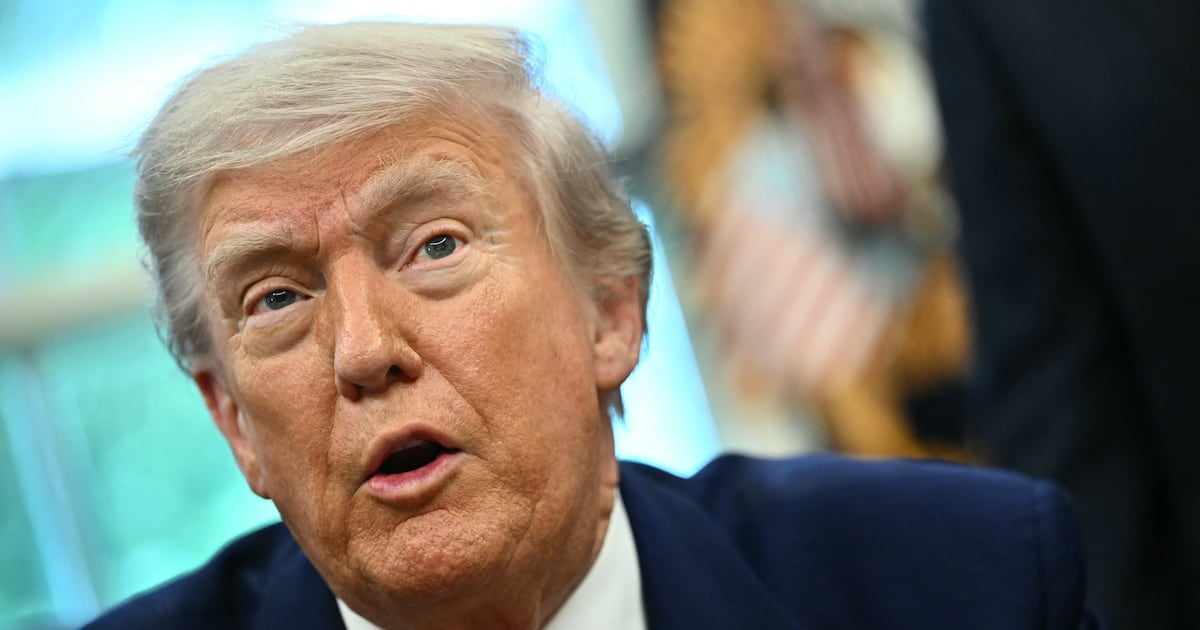
President Barack Obama was right today to remind us how cataclysmic things were exactly one year ago, the day Lehman Brothers went bankrupt. Credit had died, huge banks were tanking, remaining players clambered to Washington to get cash while stomping on their competitors’ faces, all while politicians were calculating how to win elections and save global markets at the same time.
And he was right to talk about how things are improving. Fast forward a mere year and consider the following: Power banks like Goldman Sachs and J.P. Morgan Chase recently posted record profits, their stock prices are soaring, and they’ve paid back billions of dollars in TARP money.
At least before the meltdown banks were ostensibly creating their own capital, borrowing from each other or their investors. Now they’re playing with the taxpayers’ stash.
Where he missed the mark, though, was the target he went after, in terms of making sure we don’t fall back toward those dark days. Obama talked about “some in the financial industry” falling back into old, risky habits, when calling for a series of wide-ranging, but incremental reforms. First, he should have said “all.” And second, the problem right now isn’t just on Wall Street, but also in Washington, which now essentially owns our banking system, with all its misplaced risk—the exact same system that gave us the meltdown we’re currently enjoying.
• William Cohan: The Unnecessary Meltdown Specifically, the Federal Reserve, Treasury Department, and Federal Deposit Insurance Corporation have dumped $19.3 trillion into the banking system—$17.5 trillion of which went to financial institutions in the form of capital injections (like an adrenaline shot to the heart of a bank overdosing on its own risk), general market backing, federal guarantees, and cheap loans from eight major new Fed facilities in return for quasi-toxic collateral. That makes last year’s $700 billion in TARP money a mere 4 percent of the full subsidization of Big Finance and the havoc it wreaked on the rest of the economy.
And that means the next financial bubble to burst will be the federal bailout itself.
All these subsidies were supposed to prop up the biggest financial firms in order to keep them from unleashing further devastation on the general economy during last fall’s crisis period. We were told this would stabilize the banks and loosen credit for small businesses and individuals.
The exact opposite happened. Banks continued to go belly up and credit became tighter, “systemically important” banks were consolidated courtesy of the Fed and Treasury Department, and bank fees increased. And the financial goliaths that inhaled our money got their soaring stock prices, profits, and bonuses. But that part is an illusion. Even the profits themselves, announced in July, aren’t what they seem. They came from using federal capital to take more risk.
Last quarter, J.P. Morgan Chase reported record fees and revenue from its fixed-income market division, the one that does the most trading. Consumer divisions lagged behind and the company was hampered by credit problems. It paid back $25 billion of TARP funding, but retains an additional $70 billion of federal goodies—and those don’t even include whatever loans the bank received from the very secretive Fed. Goldman Sachs also announced a record $13.8 billion in revenue, $6.8 billion of which came from the division that does its trading—the risky one. The firm paid back $10 billion of TARP loans, but held onto an additional $54 billion in public gifts. Wells Fargo posted a record profit, but also showed a decrease of $20 billion in lending compared to the first quarter, and a decline in asset values.
So the profits reaped by the big banks aren’t likely to be passed on to consumers in any meaningful way any time soon. But the larger problem is, what happens when banks have to pay back the government subsidies beyond TARP? We might discover that there’s even less to these firms than they would have us believe, and find ourselves in the middle of another financial collapse. That bubble burst will be even more chaotic than the current one. Why? Because next time, it won’t just be the capital they raised in the markets on the table—it will be all that federal money they got as well.
And what if the banks don’t pay back their loans any time soon? Stronger banks will chug along while the FDIC keeps shutting down struggling banks, raising debt and trading big on the back of federal capital. Until one of those scenarios plays out, the problems that spurred the crisis—the loan and credit defaults, foreclosures, job losses, and general disparities in incomes—continue to hammer the average American.
Double-digit jobless rates pervaded 139 metropolitan areas in the United States as of July, compared to only 14 last summer. Nationwide unemployment reached 14.9 million, or 9.7 percent in August, with an additional 2.3 million people barely hanging on. Plus, the housing situation keeps deteriorating: There were nearly 2 million new foreclosure filings—including default notices, auction sale notices, and repossessions—in the first half of 2009 (bringing the total filings since 2007 to 7.3 million), up 15 percent from the same period during 2008, according to RealtyTrac.
So, what happens in the meantime? Well, the government could close down the faucets of money and request quicker payback of all forms of its subsidies—but that would likely crash the artificially bolstered financial system. And it’s not going to happen.
Or the government could stay the course, and hope that the myriad of problems underlying our banking system solve themselves—if banks need to keep trading with government chips, at greater risk, to post higher profits, then so be it. Meanwhile, as President Obama reiterated, a set of fairly tepid reforms that don’t fully transform Wall Street will keep getting batted about Washington. Some are useful, to be sure. Putting all derivatives on regulated exchanges (though “all” will become the least profitable ones), creating a Consumer Finance Protection Agency to help mitigate some of the risk of esoteric loans (which the Chamber of Commerce and others are fighting tooth and nail) are both good steps to avoiding certain repeats of economic chaos.
But ideas like shuffling some regulatory-agency decks in Washington, when regulators, most notably the Fed, failed to do their job to begin with—isn’t change. And pumping trillions of dollars into the financial sector does not address the banking system’s most fundamental and obvious flaw: Banks are too big and their functions too convoluted and dangerous. When the Glass-Steagall Act of 1933 was repealed by the Gramm-Leach-Bliley Act of 1999, commercial banks were again allowed to take speculative risks with consumer deposits, merge with investment banks and insurance companies, and load up debt based on weak assets. All those pools of money were allowed to mix and the financial system devolved to the freewheeling mentality that existed pre-Great Depression. That’s when the current economic crisis really began.
Which brings us back to the beginning. Churning federal capital, big trading risks, and less competition created the illusion of improved bank profits following a horrendous 2008. At least before the meltdown banks were ostensibly creating their own capital, borrowing from each other or their investors. Now they’re playing with the taxpayers’ stash. We don’t have to look into the future to find the next bubble—we just have to take a look around now. The brewing bubble comes courtesy of this federal bailout. So will the next burst.
Nomi Prins is author of It Takes a Pillage: Behind the Bonuses, Bailouts, and Backroom Deals from Washington to Wall Street (Wiley, September, 2009). Before becoming a journalist, she worked on Wall Street as a managing director at Goldman Sachs, and running the international analytics group at Bear Stearns in London.






